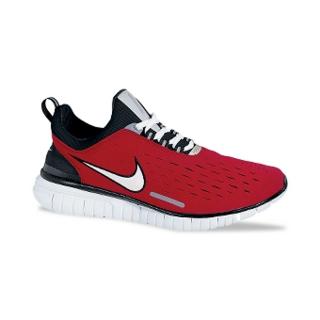Transitions
I never really practice transitions, contrary to the conventional wisdom of the multisport world. I do mostly duathlons, which simplifies matter (I seldom peel a wetsuit, and when I do, it's a peculiarly easy wetsuit to shuck). Still, my transitions are fast enough--usually under a minute, usually fairly comparable to the very fastest at the sport--so it's nothing I worry about a whole lot. Maybe I've done enough multisport events in my life (though I doubt it--my first duathlon was in 1998) and have adequate experience. To me, it's a matter of placing things logically. The key one, of course, is T1, the first transition to the bike, because there are more things to remember, and more of them have to be done while standing in one place. Here are my usual practices:
1. Shoes that are easily slipped off and on (see the Nike Free 5.0 review), usually lubricated with Sport Shield and laced with a fast lacing technology. The best I've tried so far are Lock Laces.
2. Helmet on or near the handlebar. I've taken to putting it at the bridge of my aerobars. Getting the buckle to snap into place is usually the big challenge here.
3. I lock my shoes into the pedals beforehand, unless there's a circumstance that suggets otherwise (steep hill at the beginning of the bike leg, for example, that would make pedaling on top of my shoes difficult). I've found the question of donning bike shoes in transition or slipping them on to be a wash. I choose to lock them in to the pedals and slip them on while riding because it's easier to run in bare feet than in cycling shoes.
4. Remember where my bike is in the transition area. I usually survey the "run in" or "swim in" area of the transition area and count the number of racks until I get to mine. That way I'll remember when I'm doing it at speed.
5. If there are things I need before the bike, place them on the left side of the bike because that's the side I prefer to walk/run the bike on and mount from. Usually, I slip my shoes off, using my toes, on the left side of the bike. That leaves my hands free to put on the helmet, buckle it, grab the bike and run to the bike mount line.
6. Finally--BE CALM! It should be done quickly, but most importantly, should be done under control. Going too fast and making mistakes can cause more trouble than going too slowly.
1. Shoes that are easily slipped off and on (see the Nike Free 5.0 review), usually lubricated with Sport Shield and laced with a fast lacing technology. The best I've tried so far are Lock Laces.
2. Helmet on or near the handlebar. I've taken to putting it at the bridge of my aerobars. Getting the buckle to snap into place is usually the big challenge here.
3. I lock my shoes into the pedals beforehand, unless there's a circumstance that suggets otherwise (steep hill at the beginning of the bike leg, for example, that would make pedaling on top of my shoes difficult). I've found the question of donning bike shoes in transition or slipping them on to be a wash. I choose to lock them in to the pedals and slip them on while riding because it's easier to run in bare feet than in cycling shoes.
4. Remember where my bike is in the transition area. I usually survey the "run in" or "swim in" area of the transition area and count the number of racks until I get to mine. That way I'll remember when I'm doing it at speed.
5. If there are things I need before the bike, place them on the left side of the bike because that's the side I prefer to walk/run the bike on and mount from. Usually, I slip my shoes off, using my toes, on the left side of the bike. That leaves my hands free to put on the helmet, buckle it, grab the bike and run to the bike mount line.
6. Finally--BE CALM! It should be done quickly, but most importantly, should be done under control. Going too fast and making mistakes can cause more trouble than going too slowly.





